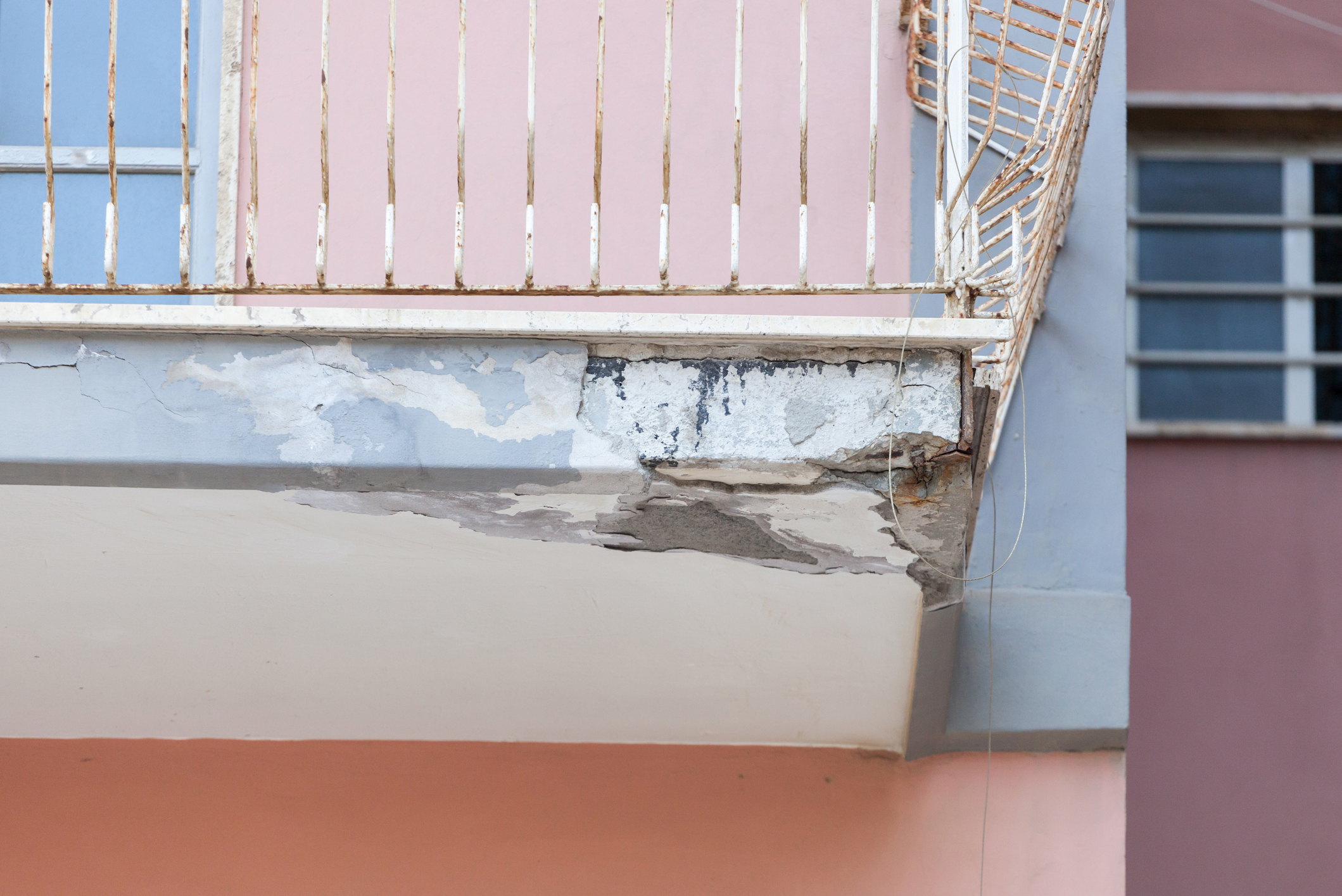A balcony acts as a space that connects the interior of a living space with outdoor areas. The balcony space can help bring light into dark spaces as the wall that separates the balcony from the interior space is usually made of movable glass. These welcoming and attractive outdoor living areas can be used for multiple purposes and are a welcomed area for many living and working in various residential and commercial buildings. Much care and attention should be given to these outdoor living spaces as over time they’re subjected to inclement weather, wear and tear, as well as the condition in which the building is in that they are an extension of. Over the course of time balconies can deteriorate and can become a hazard rather than being a versatile outdoor space for tenants to enjoy.
The balcony concrete of residential and commercial structures is a cantilevered extension of the living room floor slab. Within the balcony concrete, reinforcing steel is situated in varying sizes and layouts. Typically, two mats (layers) of reinforcing steel are present but there can be also one mat present. Over the course of time, the reinforcing steel corrodes in varying degrees whether atmospheric or not. Ongoing maintenance and reviews can reduce large expenditures for building owners as well as their respective tenants. Prolonging maintenance and repairs can have the opposite desired result.
Safety
Balcony safety is a major concern especially when it comes to falling concrete. Missing concrete is often visible on balconies. Missing portions of concrete that have fallen at some point are usually visible but are merely discarded from the ground. It’s important to note that a small rock sized piece of concrete can kill or injure people below. In addition to concrete, railings keep tenants and items placed in the space safe and secure. The concentration of reinforcing steel is heaviest at the balcony perimeter. This is also the area where railings are installed. Balcony railings are either surface mounted or welded to plates within the concrete perimeter of the balcony. Prolonged deterioration of the perimeter reinforcing steel can result in the railing deteriorating causing major safety issues.
Prevention
There are consequences for neglect. Most importantly, human safety as well as the liability and litigation that come thereafter any undesired circumstances as a result. These situations can be easily avoided. Concrete balconies should be inspected by qualified engineering professionals who have a track record of reviewing and restoring balconies. Building owners should only have an experienced eye can determine the condition. It is recommended that a qualified engineering consultant in concrete restoration is obtained to review a building’s balconies on an ongoing basis, ideally this should happen at the very least on an annual basis.
A condition review begins with all items being removed from the balcony. The consultant chain drags, or hammer sounds, each balcony to detect concrete delaminations. A trained consultant will also be able to visually review the balconies for deficiencies. A comprehensive report outlining the findings and an estimated budget to address any of the defined findings should be provided to the appropriate parties. The reports are stamped by the engineer of record.
It should be noted that Occupational, Health and Safety has closed unsafe balcony spaces which posed safety hazards to the public. The aforementioned scenario usually results in immediate repairs, this becomes much costlier for building owners to address than if the repairs are identified and undertaken beforehand. A proactive approach results in a safer outdoor space for tenants and the general public as well as increased certainty and peace of mind for building owners, operators and managers.
